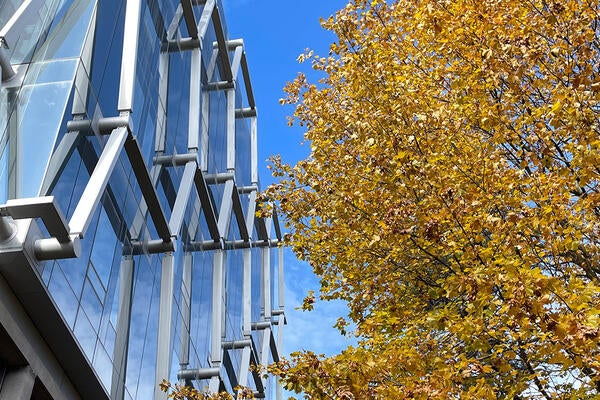
No more needles! Tracking blood sugar on your wrist
Waterloo researchers design wearable tech that can sense glucose levels for diabetics more accurately than ever before

Waterloo researchers design wearable tech that can sense glucose levels for diabetics more accurately than ever before
By Media RelationsImagine shrinking satellite technology that predicts the weather into a device that transmits vital information about the health of the person wearing it.
University of Waterloo engineers have achieved this technological feat to help people faced with chronic health problems such as diabetes monitor their glucose levels.
The Waterloo team’s breakthrough addresses the major challenge of creating non-invasive, continuous glucose monitoring, essential for those managing diabetes.
Currently, diabetics must frequently prick their fingers or rely on invasive wearable patches with micro-needles to track their blood-sugar levels. But the system designed by Dr. George Shaker, an adjunct associate professor at Waterloo’s Department of Electrical and Computer Engineering, and his colleagues eliminates this need, thereby reducing pain, the risk of infection and improving people’s quality of life.
 “We’ve developed radar technology that can now fit inside a smart watch and sense glucose levels more accurately than ever before,” Shaker said. “Just like you use glasses to improve your vision, our technology helps for better sensing of glucose levels.”
“We’ve developed radar technology that can now fit inside a smart watch and sense glucose levels more accurately than ever before,” Shaker said. “Just like you use glasses to improve your vision, our technology helps for better sensing of glucose levels.”
To explain how the new system works, Shaker points to weather satellites that use radar to monitor the Earth’s atmosphere and, for example, measure storm movements and other kinds of cloud cover.
“We’ve figured a way to miniaturize these radar systems on satellites and put them in a wearable device and use the same radar technology that looks at changes in the atmosphere to look at changes in the human body,” he said
The system’s key components are a radar chip, which sends and receives signals through the body, an engineered “meta-surface”, which helps focus these signals for better accuracy, and microcontrollers, which process the radar signals using artificial intelligence algorithms. The algorithms improve the accuracy and reliability of the readings by learning from the data over time.
The unique aspect of this system is the meta-surface which Shaker and his team have developed. It further improves the radar’s resolution and sensitivity, allowing for more accurate glucose readings.
“Unlike existing methods that require skin penetration our system is entirely non-invasive and can detect even small changes in glucose level,” Shaker said. “No other technology can provide this level of precision without direct contact with the bloodstream.”
More work remains to perfect their system. Although the engineers now power their device with a USB cable, they’re planning to optimize it for battery use to improve portability. Eventually, they hope it can be used to gather other health-related data, such as blood pressure.
The team is currently working with industry partners to introduce the technology to be installed in the next generation of wearables.
“We have a minimum viable product that’s already being used in clinical trials, and while there’s more work to be done, we’re much closer to a full marketable device,” Shaker said.
The research paper, “Radar near-field sensing using metasurface for biomedical applications” was recently featured in Nature’s Communications Engineering.

Read more
Here are the people and events behind some of this year’s most compelling Waterloo stories

Read more
15 University of Waterloo researchers have been named to the annual Highly Cited Researchers™ list for significant contributions to their specific fields of research

Read more
New Canada Research Chairs will tackle future-focused problems from social robots and intergroup attitudes to geochemistry and nanoscale devices
The University of Waterloo acknowledges that much of our work takes place on the traditional territory of the Neutral, Anishinaabeg, and Haudenosaunee peoples. Our main campus is situated on the Haldimand Tract, the land granted to the Six Nations that includes six miles on each side of the Grand River. Our active work toward reconciliation takes place across our campuses through research, learning, teaching, and community building, and is co-ordinated within the Office of Indigenous Relations.